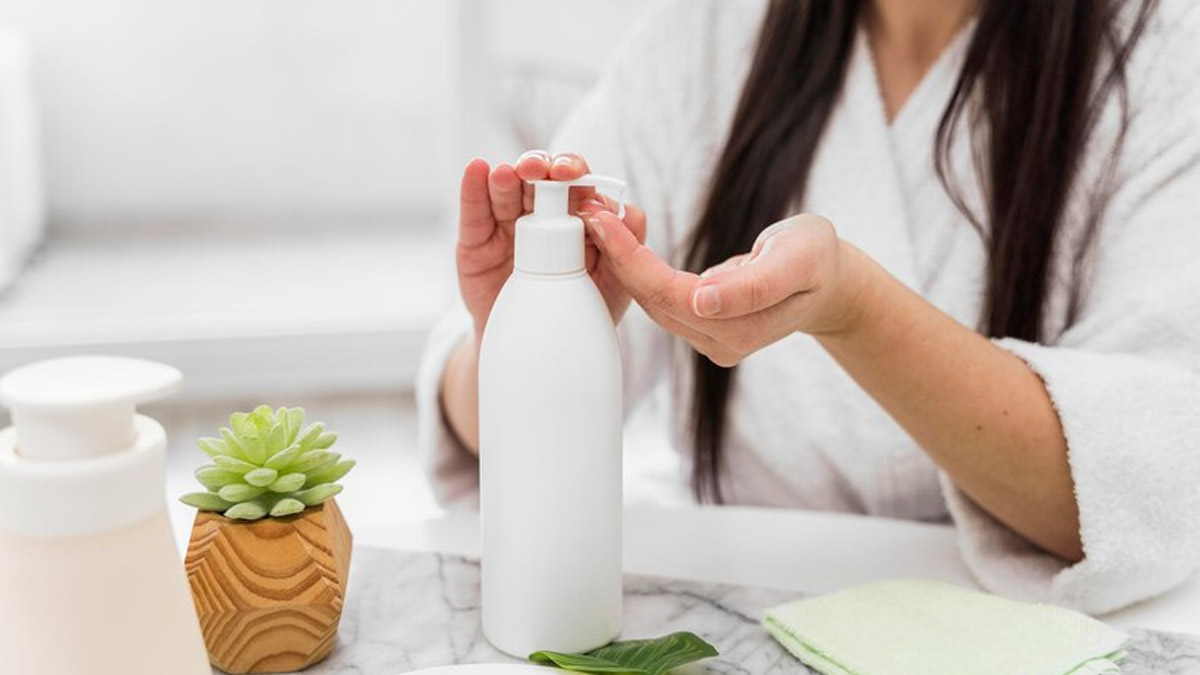
Conditioning the hair is one of the most important steps to achieving soft and silky locks. It moisturises your hair, reduces friction between hair strands, and also adds shine. Over the years, hair conditioners have gained much popularity. However, a new innovation has grabbed people's eyes, which is leave-in conditioner. This haircare product can be applied to the hair and can be left as is without rinsing it out. Interesting, isn't it? But to know more about this product, the OnlyMyHealth team interacted with Dr Bela Bhat, Consultant Dermatologist, Amrita Hospital, Faridabad, who discussed the benefits as well as the risks of using leave-in conditioners.
Table of Content:-
Also Read: Ditch DIY Masks: Use These Single Ingredients For Healthy Hair
Benefits Of Leave-In Conditioners

As compared to regular conditioners that provide temporary moisture, leave-in conditioners provide continuous hydration throughout the day, said Dr Bhat, adding that they are easy to apply and require no rinsing, making them ideal for quick hair care routines.
These conditioners also help detangle hair, reducing breakage and making combing easier.
According to Dr Bhat, many leave-in conditioners contain ingredients that protect hair from heat damage caused by styling tools. They help to tame frizz and add smoothness, which is particularly beneficial for curly or dry hair types.
How Often Should You Use Leave-In Conditioners?
Leave-in conditioners can be used daily or as needed, depending on the hair’s moisture levels and condition, said Dr Bhat.
She added that curly or coarse hair may benefit from daily use to maintain hydration and manage frizz, whereas fine or oily hair might need less frequent use (e.g., 2-3 times a week) to avoid weighing down the hair.
People with colour-treated or damaged hair can use leave-in conditioners more frequently to help repair and protect the hair from further damage.
Also Read: Your Hair Loss May Be Due To Magnesium Deficiency: Here’s How To Handle It
Ingredients To Look For![]()
The impact of a haircare product depends on various factors, such as the formulation process, the concentrations of the ingredients, and how the product is used. However, one of the most important aspects of such products are their ingredients. Same goes for leave-in conditioners. As per the dermatologist, here are some important ingredients you must look for in leave-in conditioners:
- Hydrolysed proteins, such as keratin, silk, or wheat proteins, which strengthen and repair the hair.
- Natural oils, like argan oil, jojoba oil, or coconut oil, which provide moisture and shine.
- Humectants, such as glycerin or aloe vera, which attract and retain moisture.
- Silicones, like dimethicone, can smooth the hair and provide heat protection (though they should be used sparingly to avoid buildup).
- Vitamins and antioxidants, such as vitamin E and panthenol, which nourish the scalp and hair.
Are There Potential Risks?

As we all know, excess of anything can lead to negative effects; it is the same for leave-in conditioners.
Dr Bhat said, “Excessive use can lead to product buildup, making the hair look greasy or feel heavy.”
She added, “Overuse, especially of products with silicones or heavy oils, can irritate the scalp or cause clogged pores. Fine hair types can become limp and lose volume with too much product.
Moreover, over-conditioning can alter the natural texture, making hair overly soft or unmanageable, the doctor noted.
Also watch this video
How we keep this article up to date:
We work with experts and keep a close eye on the latest in health and wellness. Whenever there is a new research or helpful information, we update our articles with accurate and useful advice.
Current Version
